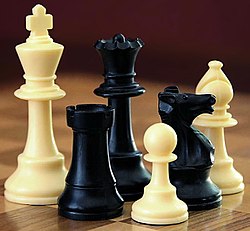Learn the implications of the chess endgame and how they can be used to your advantage.
There is no clear-cut definition for when the endgame begins in a chess match, but it usually entails very few remaining pieces. A working knowledge of the endgame's unique implications can help a player ensure victory or at least transform a losing situation into a draw.
The Power of Pawns
First and foremost, the opportunity for promotion makes pawns the endgame's biggest priority. Former world champion Max Euwe went so far as to maintain that two connected passed pawns on the sixth rank were equal in value to a rook. Being able to competently defend one's pawn chains is vital. The player with the advantage should avoid exchanging pawns unless it helps him acquire a passed pawn or other tangible benefit.

Let the King Pull His Weight
Throughout the opening and middlegame, the king was a vulnerable liability to be protected. Consequently, some players make the mistake of continuing this modus operandi into the endgame. The king's ability to move one square in any direction makes him quite useful for weaving between groups of enemy pawns and picking them off. The king is also a key defensive tool. So few pieces are left in the endgame that relying on a lonely knight, bishop or rook to safeguard one's pawns simply won't work. Some theorists give the king a fighting value of four points, superior to the minor pieces but inferior to a rook. All in all, moving one's king towards the center of the board so that it can be used to maximum effect is a critical endgame maneuver.
Taking the Initiative
Being the one calling in the shots is more important now than in any other phase of the game. It's better to have an active rook than one that's pinned down in a defensive role and one to two extra pawns. Having a well-advanced king or passed pawn while one's opponent doesn't are also situations that more than make up for being down a few pawns.
Zugzwang
Once only the pawns and kings are left on the board, it isn't uncommon for a situation to arise where a player would rather pass than make a (disadvantageous) move. Such a scenario is formally termed "zugzwang." Exploiting these cases to one's advantage can sometimes turn the tide decisively.
Snatching a Draw From the Jaws of Defeat
Last but not least, trying to settle for a draw is a common endgame tactic both players should stay aware of. There are certain material imbalances that result in guaranteed draws. For instance, two knights cannot checkmate a lone king because stalemate will always occur first. Another example is having the advantage of a bishop and pawn. If the bishop cannot reach the pawn's promotion square, then a draw is inevitable.
Sources
Euwe, Max, and Walter Meiden. The Road to Chess Mastery. New York: D. McKay, 1966. Print.
Comments